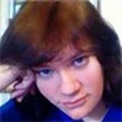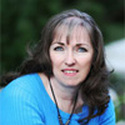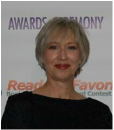Take it away, Kristie Kiessling, author of Sanguis Dei!

Read more here.

Fantasy and sci-fi--No, fiction authors (at least those I know) write to entertain. We write about people. People, both men and women, are often violent, cruel, abusive, and criminally selfish. Our world has a long history of them, from Cain to Bashar-al Assad, from Jezebel to Griselda Blanco. Fictional worlds are rife with them as well . . .
Read more here.

The world has changed dramatically, even since I was a child, with regard to the place of women in our society and the options open to them. I’ve experienced the changes and benefitted from them. Still, I recognize that these changes occurred largely in the “western” world, that portion historically influenced by a Judeo-Christian ethic. Women in many other places have not been as fortunate as have I. In some cases, they live in what might be called “medieval” times. This is an important issue, as many fantasies are played out in medieval-type worlds. Accordingly, I expect that the manner in which women are treated in those stories might well differ from the world in which I live today. Even so, fantasy stories are set in make-believe worlds. Those worlds can be whatever the authors want them to be. In this regard, I will address my comments with an eye toward two famously popular fantasy series—neither of which I will name.
The first series is one I fully enjoyed. The author offered numerous strong women—as leaders and even as warriors. Yet there were those within the story who were victims, sometimes of terrible violence. At times, these women were the very same ones generally portrayed as strong. Reading of the violence others imposed upon them was difficult, but it felt authentic. The stories rang true. Perhaps most significantly, in many cases, the characters victimized in the story, also overcame their circumstances, as many women do in the real world.
There is another series I read because it was so popular that I had to know what all the buzz was about. I did not enjoy it. I found within the pages, not a single ethical or worthy character—man or woman. Oh, I take that back. There was one. He was killed off in the first book. Things went downhill from there. Throughout this series, women play a single role—that of sexual object and/or to be violated on some other level. I’ve had conversations about this series with both men and women. I know of men of honor who found the stories despicable. However, one young man I recall quite liked the series. It later came as no great surprise to me when I learned that he is quite the bully. I also know women who’ve “enjoyed” these stories—though for the life of me I cannot figure out why they would. In any case, each time I’ve suggested that although I recognize the series is deemed part of the “dark” or “gritty” sub-genre of fantasy, the lack of any upstanding character(s) and of the treatment of women throughout, seriously bothered me. Invariably, those who liked the series have said something like: “But that’s the way the world was.” My response? “Oh, no, no, no. The world in the story was not a real world, current or past. It was the world the author wanted to create. It was a world he apparently enjoyed enough and identified with enough, to want to share it with others. He could have drawn at least one worthy character. He could have created at least one woman whose main purpose in the story rose above her sexuality or at least above her vulnerability to predators. He did not. I can only conclude that he does not see women in any other role, or that he is unwilling to consider that they might serve any other purpose. This reader concluded that the author found his position to be one worthy of sharing with others—and there’s the real shame of it all . . .
You might ask what the impact of these books has had on my own writing. I don’t think any, in particular. Regardless of what I’d read in the past, the world I chose to create was one with some balance. Yes, sometimes women are victimized. I do not concentrate on the brutality of the events, or drag them out for emphasis or shock value. But in my story, using the reality that violence against women does occur, helped to lend credibility to the tale. It helped make the “bad guys” readily identifiable—by virtue of their behavior in general, and with regards to their treatment of women, in particular. I also, however, created a world with strong women who lead, persevere, overcome—because that is the world in which I live, the one in which I would want to live, the one I wanted to introduce to others—though in reality, it doesn’t exist.
Please join us again in May!

